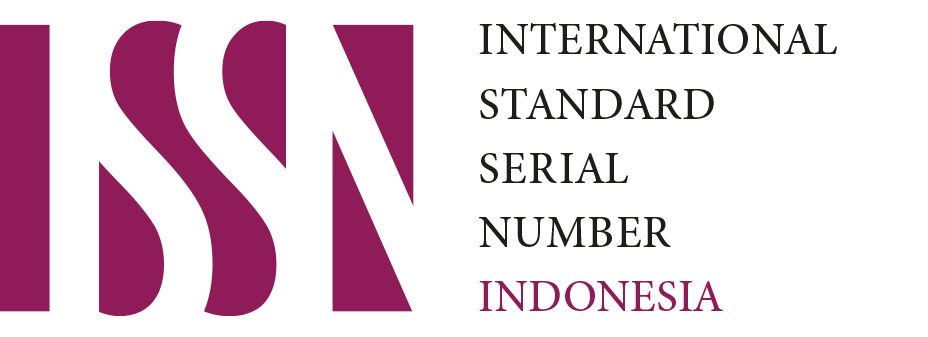The Use of SLiMS in The Circle of School Librarians in Semarang City
Downloads
Background of the study: Utilization of technology at this time is urgently needed in a job. Library is one of the jobs that requires technology. The technology used in school libraries has several types, one of which is SLiMS. SLiMS is used by librarians to build library automatic system. SLiMS users come from various generations, therefore it causes differences in the ability to use SLiMS in the circle of librarians.
Purpose: This study aims to describe the ability to use SLiMS in the circle of Semarang City school librarians by using guidelines from the theory of technology utilization.
Method: The research method uses a descriptive qualitative approach. The data collection technique was carried out by conducting observations and interviews with the Semarang City Junior High School librarians. The sample selection was done by purposive sampling method with a total sample of ten informants that are included in the X, Y and Z generations. Data analysis used in this research is descriptive analytic analysis.
Findings: The result of this research shows that the ability of the librarians to use SLiMS is different due to the differences in the way technology is used based on social factors, individual feelings, complexity, task suitability, long-term consequences, and facilitating conditions.
Conclusion: The difference in the ability to use SLiMS in Semarang Junior Librarian, can be seen from the 6 categories of technology used. From these 6 categories can improve the ability of librarians to use SLiMS or vice versa.
Downloads
Azwar, M. (2013). Membangun sistem otomasi perpustakaan dengan senayan library manajemen sistem (SLiMS). Khizanah AL- Hikmah, 1(1), 19-33.
Creswell, J. W. (2009). Research design: Qualitative, quantitative, and mixed methods approaches. Thousand Oaks, Calif: Sage Publications.
Jurnali, T. (2001). Analisis pengaruh faktor kesesuaian tugas-teknologi dan pemanfaatan teknologi informasi terhadap kinerja akuntan publik. Simposium Nasional Akuntansi IV.
Lestari, T. (2014). Pemanfaatan senayan library management system (SLiMS) Pada sistem katalogisasi, membership dan sirkulasi Perpustakaan SMK di DIY. (Skripsi, program studi pendidikan teknik informatika Jurusan pendidikan teknik elektronika Fakultas teknik Universitas Negeri Yogyakarta).
Lutfian (2009). Sistem informasi perpustakaan sistem informasi perpustakaan. Bandung: Unikom.
Miles, M. B. & Huberman, M. (1992). Analisis data kualitatif. Jakarta: Penerbit Universitas Indonesia.
Munir. (2009). Kontribusi teknologi informasi dan komunikasi (TIK) dalam pendidikan di era globalisasi pendidikan Indonesia. Jurnal Pendidikan Teknologi Informasi dan Komunikasi, 2(2), 1-4.
Musa. (2010). Sistem Informasi Perpustakaan (pustaka digital). Date of access http://msi.undip.ac.id/component/content/article/34-infotek/295-sistem-informasi-perpustakaan-pustaka-digital.html.
Nazir, M. (2014). Metode penelitian. Bogor: Ghalia Indonesia.
Rahmawati, D. (2008). Analisis faktor-faktor yang berpengaruh terhadap pemanfaatan teknologi informasi. Jurnal Ekonomi & Pendidikan, 5(1), 107-118.
Tedd, L. A and Andrew, L. (2005). Digital libraries principle and practice in a global environment. Munchen: Strauss Gmbh.
Thjai, F. J. (2003). Analisis faktor–faktor yang mempengaruhi pemanfaatan teknologi informasi terhadap kinerja akuntan publik. Jurnal Bisnis dan Akuntansi, 5(1), 1-26.
Thompson, R. L., Higgins, C. A., & Howell, J. M. (1991). Personal computing: Toward a conceptual model of utilization. MIS Quarterly, 15(1), 25-143.
Triandis, H. C. (1980). Values, attitudes and interpersonal behaviour. New York: University of Nebraska Press.
Zainal, N. A. (2015). Penerapan sistem otomasi SLiMS (senayan library management system) di perpustakaan universitas fajar makassar. (Skripsi, Fakultas Adab Dan Humaniora Universitas Islam Negeri Alauddin Makassar).
Copyright (c) 2021 Ario Adi Prakoso

This work is licensed under a Creative Commons Attribution-ShareAlike 4.0 International License.
Record and Library Journal by Unair is licensed under a Creative Commons Attribution-ShareAlike 4.0 International License.
1. The journal allows the author to hold the copyright of the article without restrictions.
2. The journal allows the author(s) to retain publishing rights without restrictions
3. The legal formal aspect of journal publication accessibility refers to Creative Commons Attribution Share-Alike (CC BY-SA).
4. The Creative Commons Attribution Share-Alike (CC BY-SA) license allows re-distribution and re-use of a licensed work on the conditions that the creator is appropriately credited and that any derivative work is made available under "the same, similar or a compatible license”. Other than the conditions mentioned above, the editorial board is not responsible for copyright violation.


 57201398420
57201398420

























